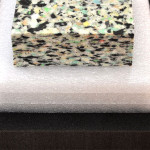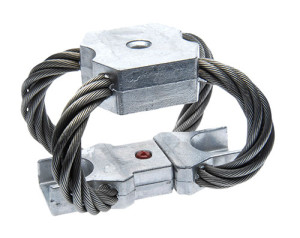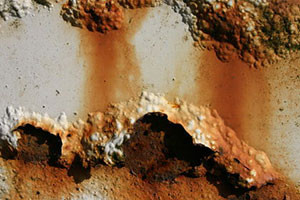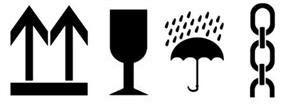Our Job
Pack / Emballer : french definition
Mettre quelque chose dans un emballage pour le transporter, le vendre, l’offrir, le ranger, etc.
Familier. Ravir quelqu’un d’admiration, l’enthousiasmer;
Populaire. Faire la conquête de quelqu’un, le séduire.
From the definition of the word “to pack” all the complexity of our business is suggested : we have to design and realize a packaging to transport one product at the other end of the world by enthusing the sender and by seducing the addressee !
The task is all the more difficult as the transport and the logistics are very far from being domains where reign the peace and the tranquility. The more a product will go, the more it will know transshipments (loading and unloading) and the more it will meet various weather conditions, various ways of locomotion (from the forklift to the plane by passing by the semi-truck drag…).
In those conditions, we had to protect your material according to its sensibility against physical attacks (shocks, vibrations), chemical attacks (oxidation), thermal attacks (rough passage of the 68°F of a hold of plane in 5°F of the tarmac) while allowing its easy manipulation, and while respecting the international standards (AFNOR, phytosanitary) and the usual sizes of the various used means of transportation (hold of plane, maritime containers, access to destination, goods lifts, doors, etc.).
Add to it the commercial constraints (prices, deadlines, quantities) and you will understand that to satisfy you, we need good mathematical, physical and chemical knowledges, and especially a big experience (that 90 years of existence of our company and a transmission from father to son on 3 generations guarantee you).
The physical protection
 During a shock, a material is going to undergo a proportional acceleration at its height of fall and then a rough deceleration during its arrival to the ground. It’s the time of the deceleration which will be the beginning of the damages.
During a shock, a material is going to undergo a proportional acceleration at its height of fall and then a rough deceleration during its arrival to the ground. It’s the time of the deceleration which will be the beginning of the damages.
So, during an emergency braking, if by car you pass from 130 km per hour to 0 km per hour in a few seconds, your car and the passengers will have no slightest damage ; On the other hand, if you crash into an obstacle and pass from 130 km per hour to 0 km per hour in a thousandth of seconds, you will owe the safe life only to the security systems which will have slowed down your movement.
Thus the role of the wedging is to lengthen the duration of deceleration by deforming during the impact so that the compression slows down the speed of the shock. Then, the wedging will have to get back its initial position to be ready for a new shock (it is the resilience).
 We use more than about ten different kind of foam (type, density, conductivity) alone or by combining them with other kind of foam or materials (wood, metal,…) to make wedging suited to the fragility of your products.
We use more than about ten different kind of foam (type, density, conductivity) alone or by combining them with other kind of foam or materials (wood, metal,…) to make wedging suited to the fragility of your products.
In the most extreme cases, (fragility under 20G, big vibratory sensibility, height of very important predictable fall, equipment that must be parachuted), We resort to shock absorbers with cables.
The chemical protection
 Water, salin air, some gases or simply amino acids which are in our sweat can irreparably damage some materials.
Water, salin air, some gases or simply amino acids which are in our sweat can irreparably damage some materials.
To avoid it we handle the most sensitive parts with gloves, we wrap them with neutral paper such as Tyvec, Bondina or tissue paper. Then we furnish the boxes with a tight cover as such as Valsem. To guarantee a better waterproofness of the box (and to avoid the risk of infestation) we can add a waterproof, empty of air and welded cover, we can also paint it and put epoxy resin on it.
The thermal protection
 A thermal shock is a sudden change in temperature applied to a material. It arises most of the time during the operations of loads and unloadings.
A thermal shock is a sudden change in temperature applied to a material. It arises most of the time during the operations of loads and unloadings.
The thermal shock leads to internal restrictions in the hard and stiff materials which can make it burst. For instance, wood, glass, crystal and rocks are sensitive to it.
During a fast cooling, the heart of a material is still hot while its external part is cold and thus retracts. The confines so engendered of tension can cause cracks or the explosion of a material.
To limit this phenomenon we fix inside the boxes of the slab of extruded polystyrene (from 1 to 3 thicknesses). Thanks to their low thermal conductivity, they are going to slow down the change in temperature and to avoid the restrictions of tension.
Phytosanitary processing, marking
The biggest risk for a material during a transport is to be lost !
We make sure that the identification of the parcel is simple (indelible marking on all the visible faces, with the usual informations – sizes, weight, references, number of the crate, destination,..) and useful for the unpackers.

Moreover, according to the international phytosanitary norm (NIMP 15) all the woods we use in our workshop are handled and our phytosanitary identification number is marked on 2 sides of crates. The marking of the logo should be enough but in case of exportation to Australia, China or the USA, we will enclosed a phytosanitary and treatment certificates.
